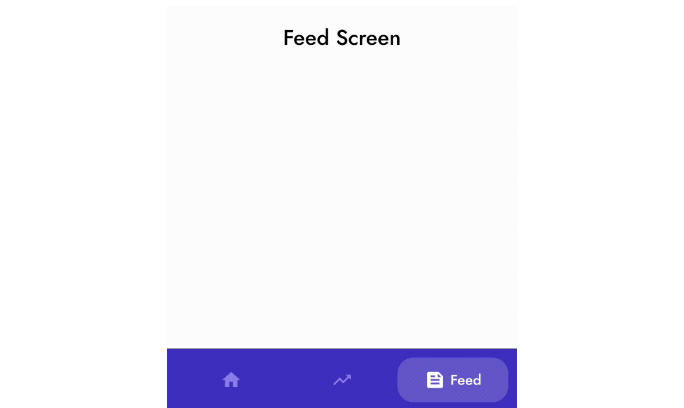NavigationAndFragments
A use case for fragments and navigation.
To implement this use case, follow these steps :
- Create a new fragment navigation xml file with id
main_nav:
<?xml version="1.0" encoding="utf-8"?>
<navigation xmlns:android="http://schemas.android.com/apk/res/android"
xmlns:app="http://schemas.android.com/apk/res-auto"
xmlns:tools="http://schemas.android.com/tools"
android:id="@+id/main_nav">
</navigation>
- Navigate to the activity class xml file and add a new
FragmentContainerViewUi view tag and add the propertyapp:navGraphwith the navigation file idmain_nav, now the navigation controller will adapt and render its data on theFragmentContainerViewon runtime :
<androidx.fragment.app.FragmentContainerView
android:id="@+id/nav_host_fragment"
android:name="androidx.navigation.fragment.NavHostFragment"
android:layout_width="0dp"
android:layout_height="0dp"
app:defaultNavHost="true"
app:layout_constraintBottom_toBottomOf="parent"
app:layout_constraintLeft_toLeftOf="parent"
app:layout_constraintRight_toRightOf="parent"
app:layout_constraintTop_toTopOf="parent"
app:navGraph="@navigation/main_nav" />
- Add 2 fragment placeholders xml tags in the above navigation tag with these respective Ids and setup a navigation action for each fragment with an id and destination parameters :
<fragment
android:id="@+id/blankFragment"
android:name="com.example.last.BlankFragment"
android:label="fragment_blank"
tools:layout="@layout/fragment_blank" >
<action
android:id="@+id/action_blankFragment_to_secondFragment"
app:destination="@id/secondFragment" />
</fragment>
<fragment
android:id="@+id/secondFragment"
android:name="com.example.last.SecondFragment"
android:label="fragment_second"
tools:layout="@layout/fragment_second" >
<action
android:id="@+id/action_secondFragment_to_blankFragment"
app:destination="@id/blankFragment" />
</fragment>
- Add a start destination property for default fragment to be rendered on application start and define the id for the start fragment :
app:startDestination="@id/blankFragment"
-
Create 2 new fragments, file > create new > fragment > fill in your options.
-
Add buttons to control the navigation between fragments :
- Those are our 2 fragments and their respective designs and naviagtion controllers :
<?xml version="1.0" encoding="utf-8"?>
<LinearLayout xmlns:android="http://schemas.android.com/apk/res/android"
xmlns:tools="http://schemas.android.com/tools"
android:layout_width="match_parent"
android:layout_height="match_parent"
android:orientation="vertical"
tools:context=".BlankFragment">
<Button
android:id="@+id/btn_next"
android:layout_width="wrap_content"
android:layout_height="wrap_content"
android:text="@string/next" />
</LinearLayout>
<?xml version="1.0" encoding="utf-8"?>
<LinearLayout xmlns:android="http://schemas.android.com/apk/res/android"
xmlns:tools="http://schemas.android.com/tools"
android:layout_width="match_parent"
android:layout_height="match_parent"
android:orientation="vertical"
tools:context=".SecondFragment">
<ImageView
android:id="@+id/imageView"
android:layout_width="match_parent"
android:layout_height="wrap_content"
android:contentDescription="@string/image"
android:src="@drawable/ic_launcher_background" />
<Button
android:id="@+id/btn_previous"
android:layout_width="wrap_content"
android:layout_height="wrap_content"
android:text="@string/previous" />
</LinearLayout>
- Add listeners for our buttons (
btn_nextandbtn_previous) to control our fragment navigation :
- Get the navigation view instance (
main_nav) from the child fragment view :
navController = Navigation.findNavController(view)
- Add a button listener and fire the navigation actions defined under each fragment :
binding.btnNext.setOnClickListener {
navController.navigate(R.id.action_blankFragment_to_secondFragment)
}
Classes References :
-
A
Fragment: A Fragment represents a reusable portion of your app’s UI. A fragment defines and manages its own layout, has its own lifecycle, and can handle its own input events. Fragments cannot live on their own–they must be hosted by an activity or another fragment. -
A
FragmentComponent: is a customized Layout designed specifically for Fragments. It extends FrameLayout, so it can reliably handle Fragment Transactions, and it also has additional features to coordinate with fragment behavior. -
Notice : FragmentContainerView will only allow views returned by a Fragment’s
Fragment.onCreateView. Attempting to add any other view will result in an IllegalStateException.




